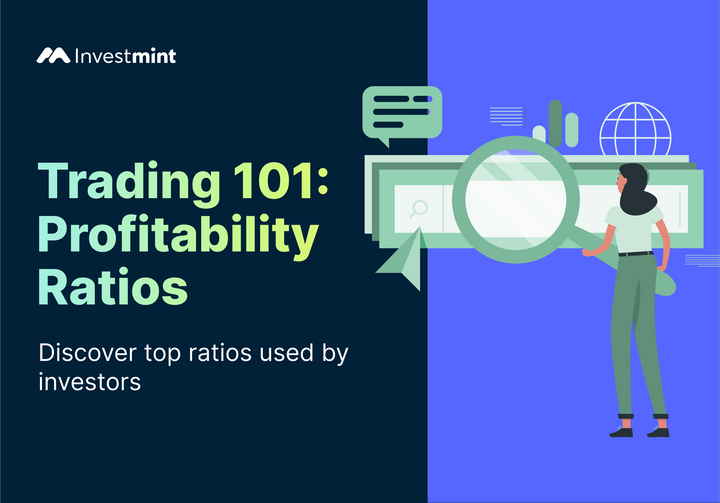Dollar vs Rupee - Where To Invest?
The Indian rupee has always played second fiddle to the dollar in the forex market. But will the status quo remain the same in the next decade?

Introduction
Investing in foreign currencies can be a lucrative way to diversify one's portfolio and potentially earn higher returns. Investing in the dollar has been investors' first choice; the rupee has struggled to hold its position in the global markets.
But with RBI’s move to make the rupee globally acceptable for international settlements, will the Indian rupee finally take a commanding position against the US dollar?
Will investing in the rupee be more beneficial for investors in the upcoming decade than the US dollar, or will the dollar hold its dominant position in the global markets?
Let’s find out.
Current Trends Around Rupee
Let’s first find out the current trends around the rupee and determine whether investors can bet their money on the currency for the upcoming decade.
The Indian rupee eroded by 11% against the dollar in 2022. In the last decade, the rupee depreciated by 33% in the global market. The question of the hour is why has the Indian rupee been depreciating constantly even when the Indian economy has become one of the fastest growing economies.
- Trade Deficit in India:
A trade deficit is incurred when a country's imports exceed exports. The basic formula for the trade deficit is as follows:
Trade Deficit = Country’s Imports - Country’s Exports
India's trade deficit for 2022-23 rose to $232.95 Billion as against $153.79 Billion in 2021-22. The increasing trade deficit has weakened the Indian rupee as there is an excess supply of the country's currency in the global market. This deficit has led to a rupee depreciation as demand for it decreases relative to other currencies.
- Depleting Forex Reserves:
Forex (foreign exchange) reserves are the foreign currency deposits and bonds a country's central bank holds.
Forex reserves provide a cushion against currency fluctuations and can help maintain stability in a country's currency. In times of currency volatility, a country with large forex reserves can intervene in the currency market to support its currency and prevent excessive depreciation.
India’s forex reserves have fallen to a 3-month low as of March 03, 2023. According to a Reuters poll, the Indian rupee is expected to stabilise and gain only marginally by the end of February 2024.
- Fiscal Deficit:
Fiscal deficit occurs when the government spends more than its total income.
Fiscal deficit = Total Expenditure – Total revenue (Excluding the borrowings)
India’s fiscal deficit stands at ₹ 9.93 lakh crore during the April-December period of 2022-23— a 50.4% surge compared to last year.
When a government runs a fiscal deficit, it may need to borrow money to finance its spending. A fiscal deficit can increase the supply of rupee in the market and decrease its value, leading to currency depreciation. A high fiscal deficit can also deter foreign investors, which can be interpreted as a sign of an unstable economy.
Should You Invest In Dollar?
With high fiscal and trade deficits, the Indian rupee has not been appealing as a form of investment. That leaves us questioning whether one should invest in the dollar and whether it is viable for the next decade or two.
The Dollar Edge
Let’s study some analysis and determine how the US dollar has an edge over the Indian rupee.
- Fed Hike:
With the recent Fed hike, the demand for the dollar is more than ever. The interest rates are the highest than they have ever been in the last 15 years.
How do these Fed hikes affect the demand for the dollar, you ask?
When the Fed raises interest rates, it becomes more attractive for investors to hold US dollar-denominated assets as they can earn higher returns. Higher interest rates can also lead to a decrease in inflation as it becomes more expensive to borrow money, which can increase the currency's value further.
- Additional Return:
In Jan 2000, 1 USD was equal to ₹ 42. Today, it is close to ₹ 83. That's approximately a 4% fall every year.
According to the IMF, INR will fall to ₹ 94 per dollar by 2028. But what does this mean for you?
It implies that you can earn an additional return of 4% every year by investing in dollars. If a US investor makes a return of 7% on his portfolio, you, as an Indian investor, would make an 11% return on the same investment.
- Hedge Against Indian Rupee:
Suppose you’ve planned a trip to London in 6 months. It cost Rs.10L today. If the Indian rupee depreciates against the US dollar in the meantime, then you will have to pay more than Rs.10L to make the same trip.
To hedge against this currency risk, you could buy US dollars today and hold them until the trip is due, effectively locking in the exchange rate.
How To Invest In Dollar?
Enough about how investing in the dollar can benefit you. But how do you start investing in dollars? Is buying US stocks the only way to invest in dollars? Isn’t investing in US stocks a bit of a hassle?
You’re already tracking the Indian markets, and it’s news so that you navigate your investments accordingly. Now add the hassle of monitoring the US market and its information; soon, you’ll find yourself tired and fed up with the global markets.
Let’s look at some ways to invest in the dollar besides buying US stocks:
- Currency Exchange-Traded Funds (ETFs): Currency ETFs are investment funds that track the performance of a specific currency against the US dollar. These ETFs invest in currency derivatives and provide exposure to a particular currency without needing to hold the currency physically. For example, Indian investors can invest in ETFs that track the US dollar index (USD) or the euro (EUR) against the US dollar.
- Bonds Denominated in US Dollars: Indian investors can also invest in US dollar-denominated bonds issued by US companies or the US government. These bonds are typically available through mutual funds or ETFs and provide a fixed income stream in US dollars. However, investors should note that bond prices can be affected by interest rate changes, inflation, and credit risk.
- Currency Mutual Funds: Indian investors can invest in mutual funds focusing on foreign currencies. These funds invest in currencies with solid fundamentals and a positive outlook, aiming to generate returns by taking advantage of currency fluctuations. Currency mutual funds can be volatile and unsuitable for a lot of investors.
Parting Thoughts
The decision of whether to invest in US dollars or Indian rupees ultimately depends on an investor's individual circumstances, investment objectives, and risk tolerance. While the US dollar has several advantages over the Indian rupee, including its status as the world's reserve currency and its relative stability, investing in US dollar-denominated assets also carries risks such as currency fluctuations and geopolitical uncertainty.
On the other hand, investing in Indian rupee-denominated assets provides exposure to the growing Indian economy but also carries risks such as inflation and depreciation.
This read aims to give you a more extensive idea of the impact of investing in the US dollar or the Indian rupee. While the US dollar and Indian rupee have advantages and disadvantages, investors should carefully evaluate their investment objectives and risk appetite to make informed decisions about where to invest their money.



